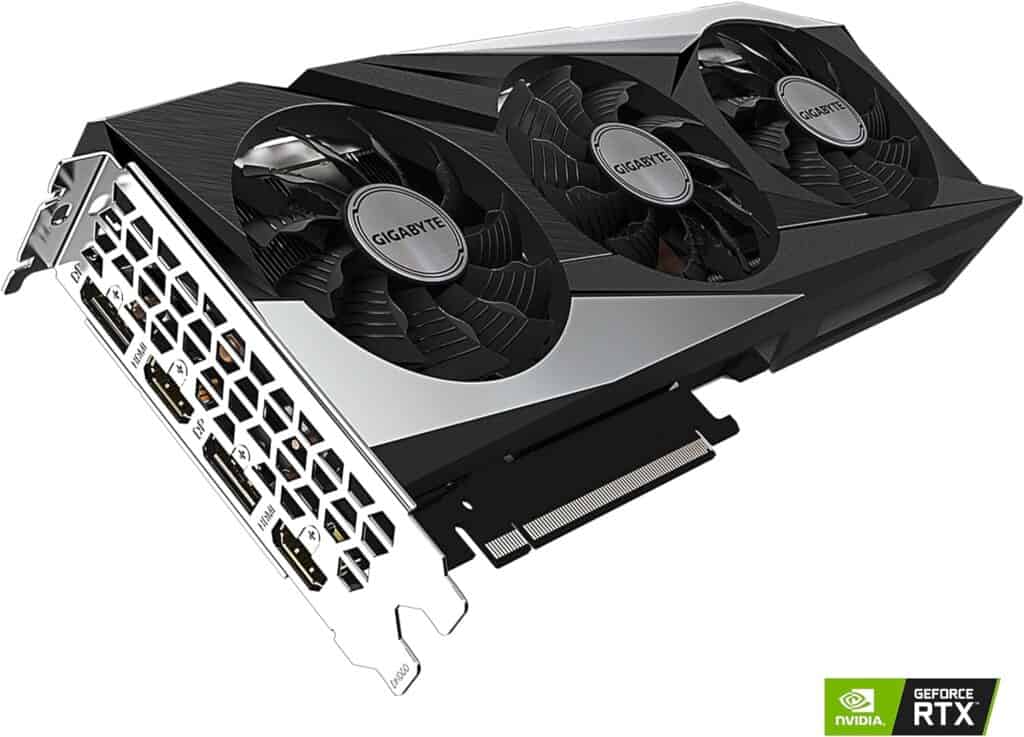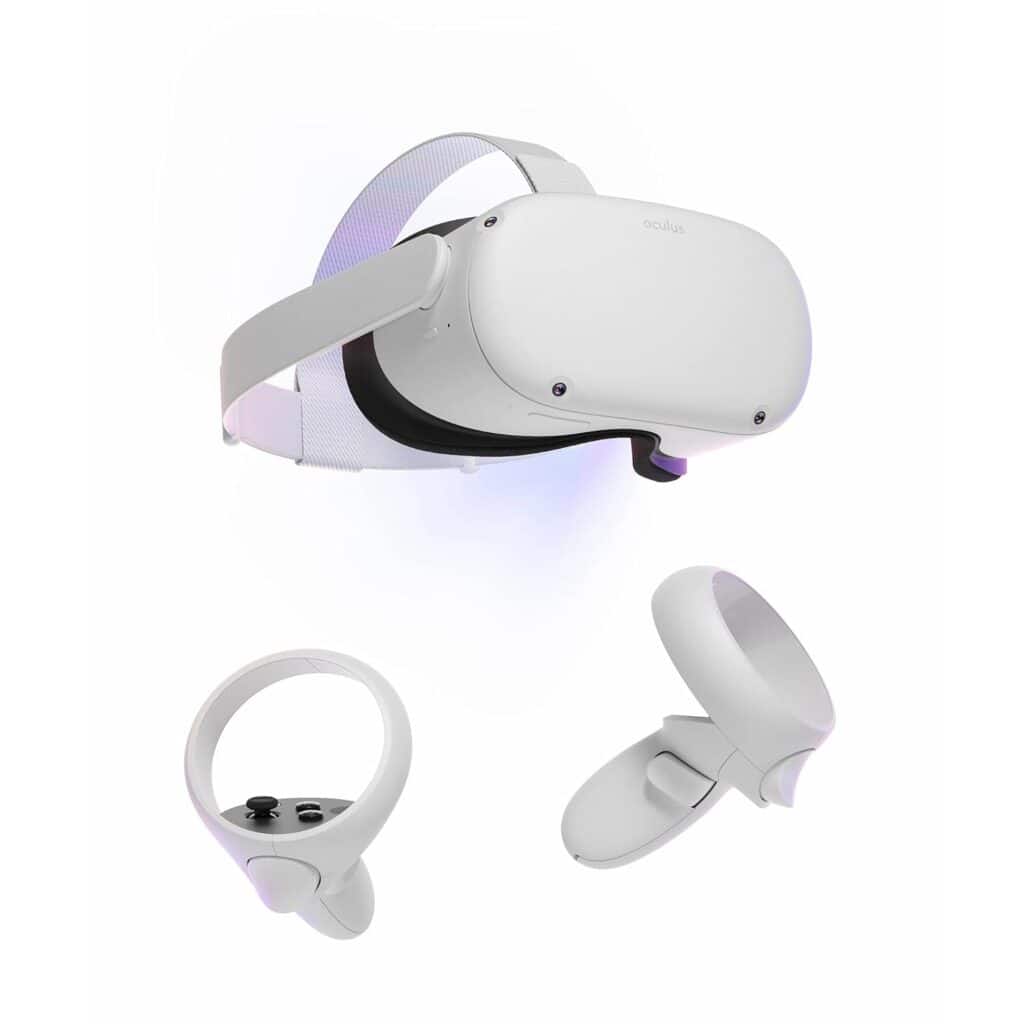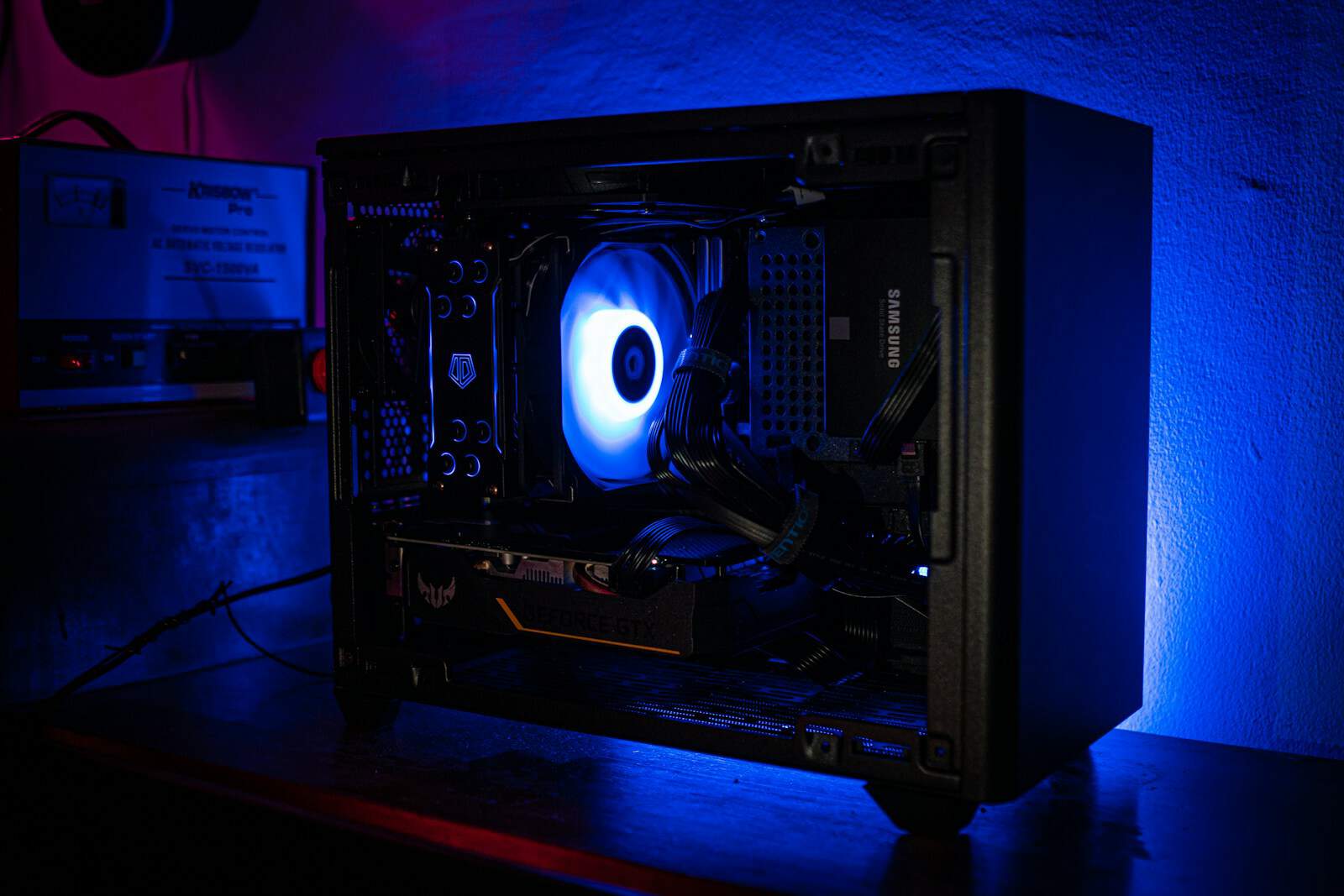Gaming enthusiasts eagerly await the latest PC specs each year, and 2024 brings exciting advancements. The most popular gaming PC specs for 2025 feature powerful processors like Intel’s 15th Gen Core Ultra or 14th Gen Core i7 or AMD’s Ryzen 7 9000 series, paired with high-end graphics cards such as NVIDIA’s RTX 4070 (and 50 series when launched) or AMD’s RX 7700 XT (or RX 8000 series when launched). These components deliver smooth gameplay and stunning visuals for today’s demanding titles.
Memory and storage have also seen upgrades. Many gamers now opt for 32GB of DDR5 RAM and 1TB or larger NVMe SSDs for faster load times and improved multitasking. Display preferences lean towards high refresh rate 1440p monitors, striking a balance between crisp visuals and fluid motion.
Budget-conscious gamers can still enjoy great performance with mid-range options. These setups often include capable CPUs like the Intel Core i5 or AMD Ryzen 5, paired with GPUs such as the RTX 4060 or RX 6700 XT. These configurations provide excellent 1080p gaming experiences without breaking the bank.
| Component | Popular Specs |
|---|---|
| CPU | Intel Core i7 / AMD Ryzen 7 |
| GPU | NVIDIA RTX 4070 / AMD RX 7700 XT |
| RAM | 32GB DDR5 |
| Storage | 1TB NVMe SSD |
| Display | 1440p, 144Hz+ |


https://store.steampowered.com/hwsurvey/Steam-Hardware-Software-Survey-Welcome-to-Steam
Most Popular Gaming PC Components (Steam)
| Item | Most Popular | Notes |
|---|---|---|
| OS Version | Windows 11 64 bit | Most popular OS |
| System RAM | 16 GB | Most popular RAM size |
| CPU Speed | 2.3 Ghz to 2.69 Ghz | Most popular CPU speed range |
| CPU Cores | 6 cores | Most popular number of CPU cores |
| GPU | NVIDIA GeForce RTX 3060 | Most popular GPU |
| VRAM | 8 GB | Most popular VRAM size |
| Primary Display Resolution | 1920 x 1080 | Most popular primary display resolution |
| Multi-Monitor Display Resolution | 3840 x 1080 | Most popular multi-monitor resolution |
| Language | English | Most popular language |
| Free Hard Drive Space | 100 GB to 249 GB | Most popular free hard drive space range |
| Total Hard Drive Space | Above 1 TB | Most popular total hard drive space size |
| VR Headset | Oculus Quest 2 | Most popular VR headset |
Breakdown Of The Parts
Operating System:
- Windows 11 64-bit: The majority of games are developed and optimized for Windows, making it the de facto choice for gaming PCs. Windows 11 64-bit is the latest operating system from Microsoft, designed to power the next generation of PCs. It features a sleek, modern interface with a centered Start menu and updated icons. Beyond aesthetics, Windows 11 offers performance enhancements, improved multitasking features, and better support for gaming technologies like DirectX 12 Ultimate. The “64-bit” designation refers to its ability to handle more memory and process data more efficiently than older 32-bit systems, making it essential for modern gaming and demanding applications.
Memory:
- 16 GB: This amount of RAM provides enough buffer for most modern games to run smoothly, especially at Full HD (1080p) resolution. It’s also the minimum requirement for many new titles, making it a safe bet for future compatibility.
CPU:
- Speed: 2.3 GHz to 2.69 GHz
- Cores: 6 cores
These CPUs offer a good balance of processing power and affordability for 1080p gaming. The 2.3-2.69 GHz range falls within the sweet spot for many popular games, and 6 cores provide enough multitasking ability for running games alongside other applications like streaming software or web browsers.

Graphics Card:
- NVIDIA GeForce RTX 3060
The RTX 3060 is a popular choice for its balance of performance and price. It can handle demanding games at 1080p with high frame rates and even offers decent performance at 1440p in some titles.
VRAM:
- 8 GB
This amount of VRAM is sufficient for most games at 1080p and even some at 1440p. Higher resolutions and demanding textures may require more VRAM, but 8 GB remains a good mid-range option.
Display Resolution:
- Primary: 1920 x 1080
- Multi-Monitor: 3840 x 1080
1080p is the most popular resolution for gaming due to its affordability and compatibility with most games and hardware. Many gamers utilize dual monitors, and the popularity of 3840 x 1080 (ultrawide) reflects this trend, offering increased multitasking space and immersive gaming experiences.
Language:
- English
This reflects the global reach of Steam and the dominance of English in the gaming industry.
Storage:
- Free Space: 100 GB to 249 GB
- Total Space: Above 1 TB
While game sizes are increasing, 100-249 GB is enough for a few installed games and basic applications. Larger total storage capacities (over 1 TB) are preferred for extensive game libraries and media storage.
VR Headset:
- Oculus Quest 2

The Quest 2 is a popular choice for its standalone functionality (no PC required for some games), affordability, and decent performance.
Other Settings:
- LAHF / SAHF: This relates to a specific CPU instruction and doesn’t directly impact gaming performance. Its 100% usage likely reflects a standard system setting with no significant influence on gaming experience.
Steam Survey Insights: A Glimpse into Current Gaming Rigs
Ever wondered what components are most popular among PC gamers today? Valve’s Steam Hardware & Software Survey provides valuable insights into the current landscape of gaming rigs. Let’s dive into some key findings from the October 2024 survey:
- NVIDIA Dominates the GPU Market: NVIDIA remains the king of graphics cards, with a staggering 77.37% market share. AMD holds a respectable 15%, while Intel GPUs are slowly gaining traction at 7.31%.
- Windows 11 is on the Rise: Windows 11 64-bit is now the leading operating system, powering 51.97% of Steam users’ PCs. This marks a significant increase of 4.28% from the previous month.
- 16GB RAM Remains the Sweet Spot: 16GB of system RAM is the most common configuration, found in 46.75% of surveyed systems. However, with increasingly demanding games, 32GB is becoming more desirable for smoother performance.
- 6-Core CPUs are the Most Popular: CPUs with 6 cores hold the top spot, present in 32.52% of gaming PCs. This indicates a shift towards more powerful processors for handling modern games.
- Full HD Still Reigns Supreme: The classic 1920 x 1080 resolution remains the most popular choice for gamers, used by 57.32% of respondents.
- Oculus Quest 2 Leads the VR Charge: The Oculus Quest 2 continues to be the most popular VR headset, with a 34.80% market share.
What can we learn from this data?
The Steam Hardware & Software Survey offers a snapshot of the current PC gaming landscape. It highlights trends such as the growing adoption of Windows 11, the dominance of NVIDIA GPUs, and the increasing popularity of 6-core CPUs. As you plan your 2025 gaming rig, consider these insights to make informed decisions about your components.
Building the Ultimate Gaming Rig in 2025
If you’re building a new PC in 2025 that will crush the latest titles you should begin with the latest and greatest from Intel and AMD. Picking the right components can feel overwhelming but don’t worry, we’ve got you covered. This guide breaks down the most popular gaming PC specs for 2025, ensuring your rig is future-proof and ready to dominate.
Note: Some of the recommendations in this article are for parts that will be coming out soon so keep that in mind. For parts that aren’t out yet you can substitute the previous generation or wait until the product launches.
CPU: The Heart of Your Gaming Beast
The CPU, or processor, is the brain of your computer. For gaming, you’ll want a CPU that can handle the intense demands of modern games. Here are the top contenders for 2025:
- Intel Core Ultra 9 285K: Intel’s flagship CPU with a whopping 24 cores, perfect for high-end gaming and demanding tasks like streaming and video editing.
- Intel Core Ultra 7 265K: A more affordable option with 20 cores, still offering excellent gaming performance.
- AMD Ryzen 9 9950X: AMD’s top-tier CPU boasting 16 cores and impressive clock speeds.
- AMD Ryzen 7 9800X3D: This CPU packs AMD’s 3D V-Cache technology, offering a significant boost in gaming performance.
Here’s a quick comparison to help you decide:
| CPU | Cores | Base Clock (GHz) | Boost Clock (GHz) | Integrated Graphics |
|---|---|---|---|---|
| Intel Core Ultra 9 285K | 24 | 3.7 | 5.7 | Intel Xe |
| Intel Core Ultra 7 265K | 20 | 3.9 | 5.5 | Intel Xe |
| AMD Ryzen 9 9950X | 16 | 4.3 | 5.7 | Radeon Graphics |
| AMD Ryzen 7 9800X3D | 8 | 4.7 | 5.2 | Radeon Graphics |
Which one should you choose?
- For the absolute best performance: Intel Core Ultra 9 285K (if your budget allows) or AMD Ryzen 9 9950X.
- For a great balance of price and performance: Intel Core Ultra 7 265K or AMD Ryzen 7 9800X3D.
GPU: Bringing Your Games to Life
The GPU, or graphics card, is responsible for rendering the visuals in your games. In 2025, you’ll have plenty of powerful options from both NVIDIA and AMD. Here are some things to consider:
- NVIDIA GeForce RTX 50 series: Expect top-of-the-line performance and features like ray tracing and DLSS. The 50 series of RTX GPUs will be released in Q1 2025.
- AMD Radeon RX 8000 series: AMD’s latest GPUs will be vying for the performance crown, offering excellent value for money.
Choosing the right GPU depends on your budget and desired resolution:
- For 1080p gaming: An RTX 5060 or RX 8700 should provide smooth frame rates.
- For 1440p gaming: Step up to an RTX 5070 or RX 8800.
- For 4K gaming: You’ll want a powerful card like an RTX 5080 or RX 8900.
RAM: Keeping Your System Running Smoothly
RAM, or memory, is essential for multitasking and running demanding games. In 2025, DDR5 RAM will be the standard. Here’s what to look for:
- Capacity: 16GB is the minimum for gaming, but 32GB is recommended for smoother performance and future-proofing.
- Speed: Aim for DDR5-6400 or higher for optimal performance.
Storage: Where Your Games Reside
You have two main choices for storage:
- NVMe SSDs: These offer lightning-fast load times and are ideal for your operating system and frequently played games.
- SATA SSDs: A more affordable option that still provides a significant speed boost over traditional hard drives.
Recommended storage configuration:
- 1TB NVMe SSD for your OS and games
- 2TB SATA SSD or HDD for additional storage
Other Essential Components
- Motherboard: Choose a motherboard that supports your CPU and has the features you need (e.g., PCIe 5.0, Wi-Fi 6E).
- Power Supply: Ensure your power supply has enough wattage to handle your components (at least 850W for a high-end system).
- Case: Select a case that provides good airflow and fits your aesthetic preferences.
Don’t Forget the Peripherals!
To complete your gaming setup, you’ll need some key peripherals:
- Monitor: A high refresh rate monitor (144Hz or higher) will provide a smoother gaming experience. Consider features like G-Sync or FreeSync for tear-free visuals.
- Keyboard and Mouse: Choose a gaming keyboard and mouse that offer comfort, responsiveness, and customization options.
- Headset: A good gaming headset will immerse you in the action and allow for clear communication with teammates.
By carefully selecting your components, you can build a gaming PC that will handle anything you throw at it in 2025 and beyond. Happy gaming!
Defining Gaming PC Specifications
Gaming PC specifications determine system performance and capabilities. Key components include processors, graphics cards, memory, and storage. These elements work together to deliver smooth gameplay and high-quality visuals.
Evaluating Processor Performance
Processors form the core of gaming PCs. The latest Intel Core i9 and AMD Ryzen 9 7950X3D lead the high-end market. For mid-range builds, Intel Core i5 and AMD Ryzen 5 offer good value.
CPU performance impacts frame rates and multitasking. More cores and higher clock speeds generally yield better results.
Overclocking can boost performance but requires adequate cooling.
| Processor | Cores | Base Clock | Boost Clock |
|---|---|---|---|
| Intel i9-14900K | 24 | 3.2 GHz | 6.0 GHz |
| AMD Ryzen 9 7950X3D | 16 | 4.2 GHz | 5.7 GHz |
| Intel i5-14600K | 14 | 3.5 GHz | 5.3 GHz |
Graphics Card Essentials
Graphics cards handle visual rendering in games. Top models include the NVIDIA RTX 4090 and AMD RX 7900 XTX.
The RTX 4070 and RTX 4060 serve mid-range and budget segments respectively. These GPUs support ray tracing and DLSS for enhanced visuals.
Resolution and refresh rate affect GPU choice. Higher resolutions demand more powerful cards.
VRAM capacity impacts texture quality and game performance at higher settings.
Memory and Storage Solutions
RAM affects system responsiveness and multitasking. 16GB is now standard, with 32GB recommended for high-end builds.
DDR5 RAM offers improved speeds over DDR4 but at a higher cost.
Fast storage reduces load times. PCIe 4.0 SSDs provide rapid data access for games and applications.
NVMe drives outperform SATA SSDs in speed tests.
A combination of SSD for the operating system and frequently played games, with a larger HDD for storage, balances cost and performance.
Picking the Right Gaming PC Build
Choosing a gaming PC involves considering prebuilt and custom options, budget constraints, and key features from top brands. These factors help gamers select the ideal system for their needs and preferences.
Prebuilt versus Custom Gaming PCs
Prebuilt gaming PCs offer convenience and reliability. They come ready to use with warranty coverage. Many top brands like Alienware, Corsair, and HP provide quality prebuilt options.
Custom builds allow more control over components and costs. Gamers can select each part to match their specific needs. This approach often yields better performance per dollar spent.
Prebuilt PCs are best for those who want hassle-free setups. Custom builds suit tech-savvy users seeking maximum customization and value.
Budget to High-end Gaming PC Ranges
Gaming PCs span a wide price range to fit various budgets and performance needs.
Budget gaming PCs ($500-$1000):
- Suitable for 1080p gaming
- May struggle with newest titles at high settings
- Often use mid-range CPUs and GPUs
Mid-range gaming PCs ($1000-$2000):
- Handle 1440p gaming well
- Can run most games at high settings
- Use upper mid-range components
High-end gaming PCs ($2000+):
- Capable of 4K gaming and VR
- Run all games at max settings
- Feature top-tier CPUs and GPUs
| Price Range | Resolution | Performance |
|---|---|---|
| $500-$1000 | 1080p | Medium |
| $1000-$2000 | 1440p | High |
| $2000+ | 4K/VR | Ultra |
Key Features of Top Gaming PC Brands
Leading gaming PC brands offer unique features to stand out in the market.
Alienware (Dell):
- Distinctive designs
- Liquid cooling options
- Easy upgradability
Corsair:
- High-quality components
- Compact form factors
- RGB lighting systems
HP:
- Affordable entry-level options
- Sleek, office-friendly designs
- Good customer support
iBuyPower:
- Customization options
- Competitive pricing
- Regular deals and discounts
Lenovo:
- Balanced performance and price
- Understated aesthetics
- Reliable build quality
These brands cater to different needs, from flashy designs to subtle looks, and from budget-friendly to high-end performance.
Optimizing for Performance and Aesthetics
Gaming PCs in 2024 blend cutting-edge performance with striking visual appeal. Advanced cooling solutions and customizable lighting options allow enthusiasts to create powerful yet beautiful systems.
Advancements in Liquid Cooling
Liquid cooling has evolved significantly, offering superior thermal management for high-performance gaming rigs. Custom loops now feature more efficient radiators and pumps, allowing for better heat dissipation from powerful CPUs and GPUs.
Compact all-in-one (AIO) solutions have become popular for their ease of installation and maintenance. These systems often include RGB-lit water blocks and fans, adding visual flair to the cooling setup.
Some manufacturers have introduced phase-change cooling, which uses refrigerants to achieve sub-ambient temperatures. This technology enables extreme overclocking potential for enthusiasts seeking maximum performance.
| Cooling Type | Noise Level | Cooling Efficiency | Aesthetic Appeal |
|---|---|---|---|
| Air Cooling | Moderate | Good | Low to Moderate |
| AIO Liquid | Low | Very Good | High |
| Custom Loop | Very Low | Excellent | Very High |
Enhancing Gaming Atmosphere with RGB Lighting
RGB lighting has become a staple in gaming PC aesthetics. Manufacturers now offer a wide range of RGB-enabled components, from motherboards to RAM modules and even power supplies.
Addressable RGB (ARGB) technology allows for intricate lighting patterns and effects. Users can synchronize their entire system’s lighting through software suites provided by component manufacturers.
Some cases now feature built-in LED strips or diffusers for a more uniform glow. This integration creates a cohesive look without the need for additional wiring or controllers.
RGB fans have also seen improvements in blade design and LED placement. These enhancements result in better airflow and more vivid lighting effects, contributing to both performance and aesthetics.
Frequently Asked Questions
Gaming PC specifications evolve rapidly. The following questions address key components and considerations for building or upgrading a high-performance gaming rig in 2024.
What are the recommended GPU models for high-end gaming PCs in 2024?
Top-tier graphics cards for 2024 include the NVIDIA GeForce RTX 4090 and AMD Radeon RX 7900 XTX. These GPUs offer exceptional performance for 4K gaming and ray tracing. Mid-range options like the RTX 4070 Super provide excellent value for 1440p gaming.
How much RAM is considered optimal for running the latest games on a PC in 2024?
16GB of RAM remains the standard for most gaming builds. However, 32GB is becoming more common for high-end systems. This amount allows for seamless multitasking and future-proofs the system for upcoming game releases.
What are the essential features to look for in a gaming motherboard this year?
Key features include PCIe 5.0 support, multiple M.2 slots for NVMe SSDs, and robust VRM cooling. Wi-Fi 6E or 7 connectivity and Thunderbolt 4 ports are valuable additions. Compatibility with the latest CPU sockets (LGA 1700 for Intel or AM5 for AMD) is crucial.
What storage solutions offer the best performance for gaming PCs in 2024?
NVMe SSDs remain the top choice for gaming storage. PCIe 4.0 drives like the Samsung 990 Pro or WD Black SN850X offer blazing-fast load times. For larger game libraries, pairing a 1-2TB NVMe boot drive with a high-capacity SATA SSD is cost-effective.
How do I choose the right power supply unit for my gaming PC build?
Select a PSU with at least 80 Plus Gold efficiency. Wattage depends on components, but 750W-850W suits most high-end builds. 1000W units are recommended for systems with top-tier GPUs like the RTX 4090. Modular designs simplify cable management.
What cooling system should I install in my gaming PC to ensure optimal thermal performance?
Air cooling remains effective for most builds. High-end air coolers like the Noctua NH-D15 rival AIO liquid coolers in performance. For overclocking or maximum thermal headroom, 240mm or 360mm AIO liquid coolers are popular choices. Custom loop cooling offers the best performance but requires more maintenance.
| Component | Entry-Level | Mid-Range | High-End |
|---|---|---|---|
| CPU | Intel i5-13400 / AMD Ryzen 5 7600 | Intel i7-13700K / AMD Ryzen 7 7700X | Intel i9-14900K / AMD Ryzen 9 7950X |
| GPU | NVIDIA RTX 4060 / AMD RX 6700 XT | NVIDIA RTX 4070 Super / AMD RX 7800 XT | NVIDIA RTX 4090 / AMD RX 7900 XTX |
| RAM | 16GB DDR4-3200 | 32GB DDR5-6000 | 64GB DDR5-7200 |
| Storage | 1TB NVMe SSD | 2TB NVMe SSD + 2TB SATA SSD | 4TB NVMe SSD + 4TB SATA SSD |
| PSU | 650W 80+ Gold | 850W 80+ Gold | 1000W 80+ Platinum |





